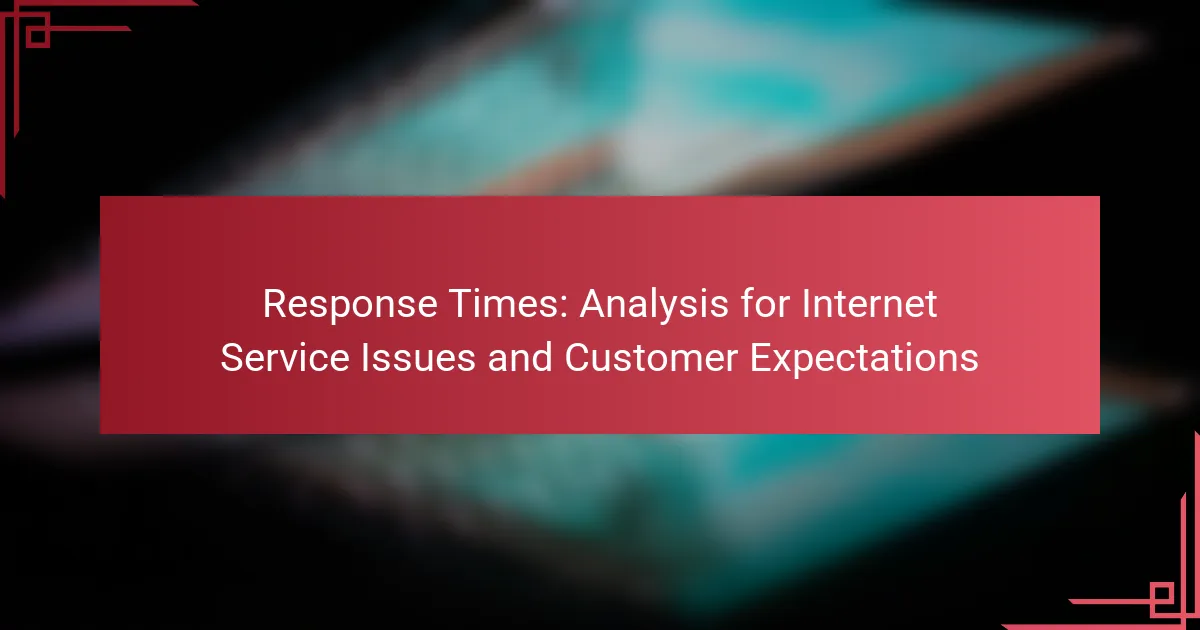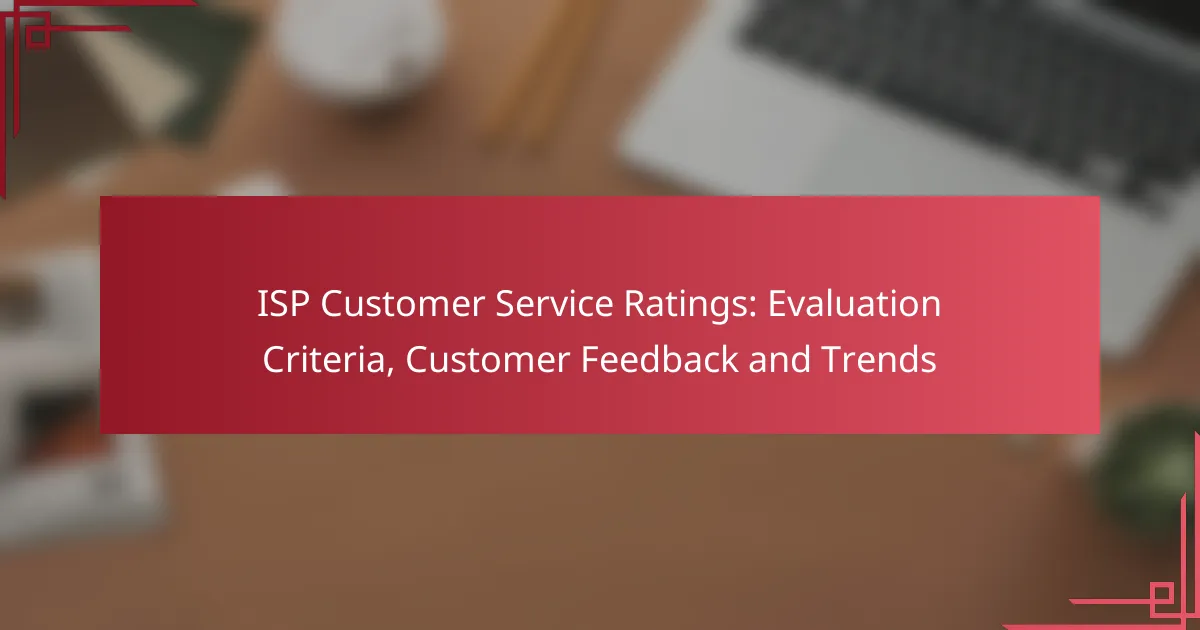Response times for internet service issues are critical in meeting customer expectations, with typical ranges varying from a few minutes to several hours based on the provider and issue severity. Customers anticipate prompt resolutions, particularly for urgent problems, which can significantly influence their satisfaction and loyalty. By effectively communicating their concerns and utilizing support tools, customers can help expedite the resolution process and enhance their overall service experience.
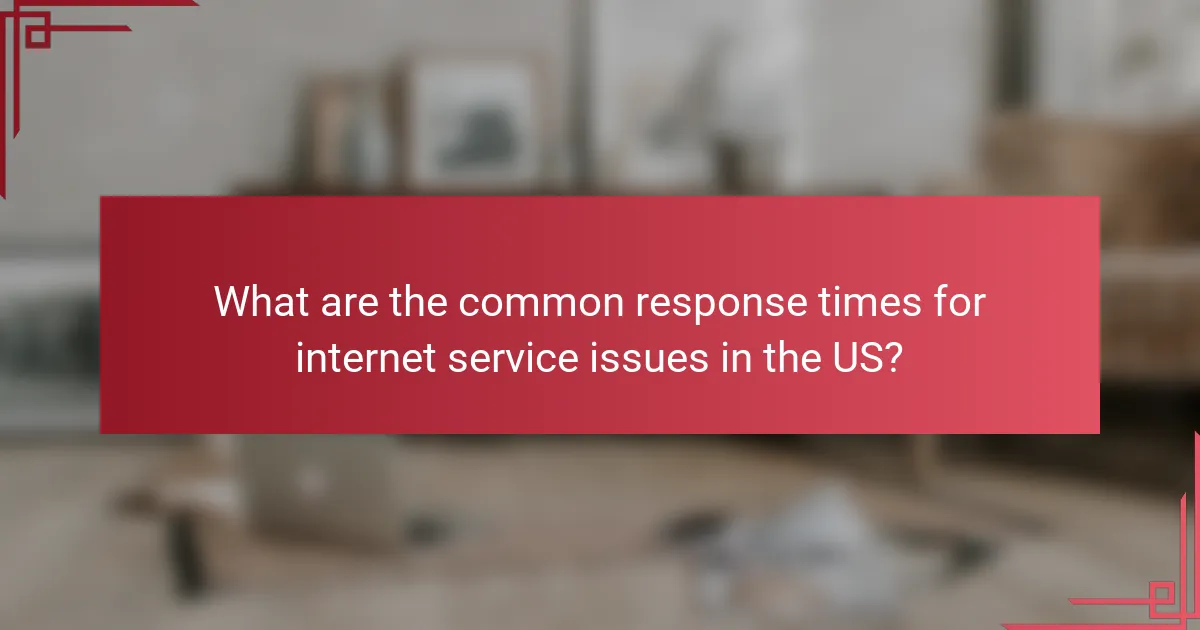
What are the common response times for internet service issues in the US?
Common response times for internet service issues in the US typically range from a few minutes to several hours, depending on the provider and the nature of the issue. Customers often expect timely resolutions, with many ISPs aiming to respond within a couple of hours for urgent problems.
Typical response times by major ISPs
Major internet service providers (ISPs) in the US have varying response times for service issues. For example, Comcast and AT&T generally respond within 1 to 3 hours for urgent issues, while Verizon may take slightly longer, often up to 4 hours. These response times can fluctuate based on the time of day and the volume of requests.
Some ISPs offer faster response times for premium customers or those with higher-tier service plans. Customers should check their specific provider’s policies to understand what to expect.
Factors affecting response times
Several factors can influence response times for internet service issues. The complexity of the problem is a significant factor; straightforward issues may be resolved quickly, while more complicated ones can take longer. Additionally, peak hours often lead to increased wait times due to higher call volumes.
Geographic location also plays a role, as urban areas may have more resources available for rapid response compared to rural regions. Customers should consider these factors when assessing their ISP’s performance.
Average wait times for customer support
Average wait times for customer support can vary widely among ISPs, typically ranging from a few minutes to over 30 minutes. Many customers report wait times of around 10 to 20 minutes during peak hours. Some providers offer call-back options to reduce the time spent waiting on hold.
To minimize wait times, customers can utilize online chat support or self-service options available on their ISP’s website. Being prepared with account information and specific details about the issue can also expedite the process.

How can customers improve response times for internet issues?
Customers can enhance response times for internet issues by clearly communicating their problems and utilizing available support tools effectively. Providing detailed information and following best practices can lead to quicker resolutions and improved service experiences.
Best practices for reporting issues
When reporting internet issues, be specific about the problem. Include details such as the type of connection (e.g., fiber, DSL), the time the issue occurred, and any error messages received. This information helps support teams diagnose and address the problem faster.
Additionally, prioritize your reports based on urgency. For instance, if your internet is completely down, report it as a high-priority issue. Using the service provider’s official channels, such as their website or app, can also streamline the process.
Using online support tools effectively
Many internet service providers offer online support tools that can significantly reduce response times. Familiarize yourself with these tools, such as chatbots or troubleshooting guides, which can provide immediate assistance for common issues.
Utilize self-service options to check service status or run diagnostics before contacting support. This can save time and help you gather necessary information to share with customer service representatives, leading to a more efficient resolution process.
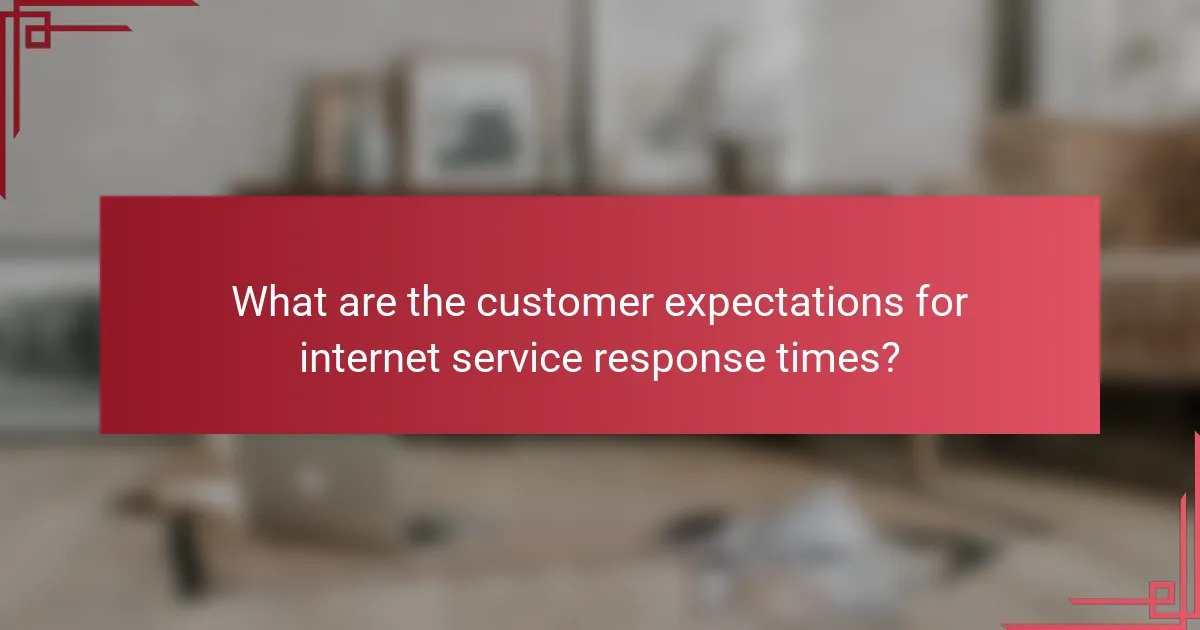
What are the customer expectations for internet service response times?
Customers generally expect prompt responses from their internet service providers, typically within a few minutes for urgent issues. Fast response times are crucial for maintaining customer satisfaction and loyalty, as delays can lead to frustration and dissatisfaction.
Industry standards for response times
Industry standards for internet service response times vary, but many providers aim to respond to customer inquiries within a range of 1 to 5 minutes for urgent issues. For less critical matters, response times may extend to 24 hours. These benchmarks help ensure that customers feel valued and that their concerns are addressed swiftly.
Providers often utilize automated systems to acknowledge receipt of customer requests, which can enhance the perception of responsiveness even if the actual resolution takes longer. Regularly reviewing and updating these standards is essential for staying competitive in the market.
Customer satisfaction benchmarks
Customer satisfaction benchmarks indicate that a response time of under 5 minutes significantly increases the likelihood of positive feedback. Studies suggest that customers who receive timely responses are more likely to remain loyal and recommend the service to others.
To maintain high satisfaction levels, internet service providers should aim for consistent response times across all channels, including phone, chat, and email. Monitoring customer feedback and adjusting strategies based on this data can help improve overall service quality and customer retention.
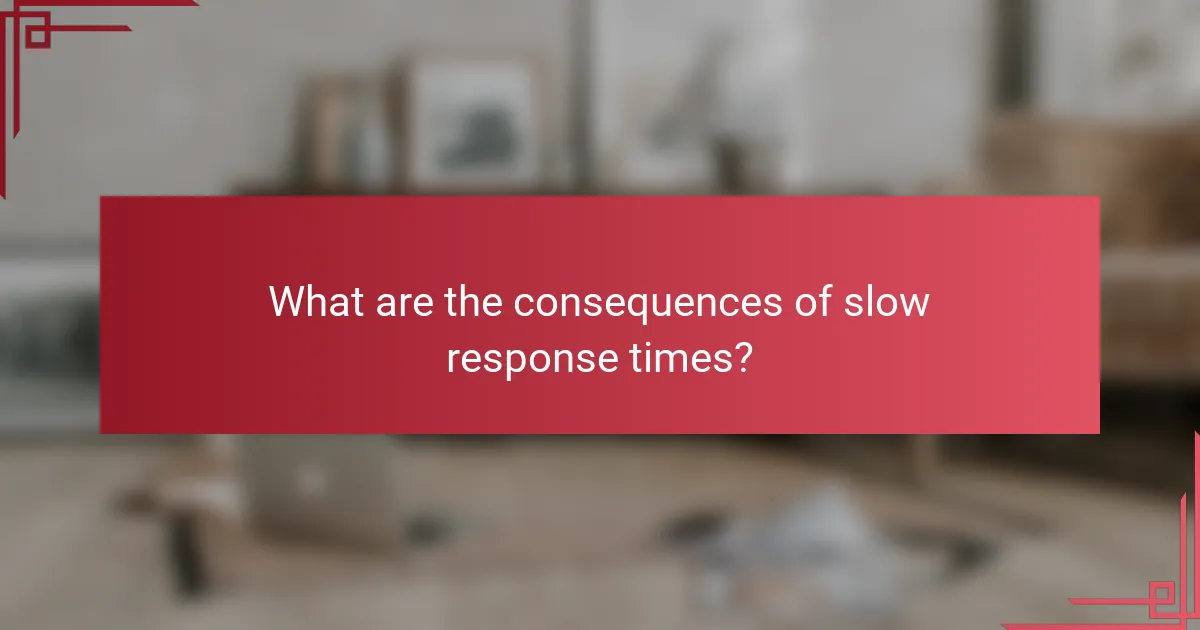
What are the consequences of slow response times?
Slow response times can lead to significant negative consequences for both customers and service providers. Delays in addressing internet service issues can frustrate users, leading to dissatisfaction and potential loss of business for providers.
Impact on customer retention
Slow response times can severely impact customer retention rates. When customers experience delays in service resolution, they are more likely to switch to competitors who offer faster support. Research indicates that even a small increase in response time can lead to a noticeable drop in customer loyalty.
To maintain retention, service providers should aim for response times within single-digit minutes for urgent issues. Implementing a tiered support system can help prioritize critical cases and improve overall customer satisfaction.
Effects on service reputation
The reputation of an internet service provider can suffer greatly from slow response times. Customers often share their experiences online, and negative reviews can quickly tarnish a company’s image. A reputation for slow service can deter potential customers from choosing a provider.
To mitigate this risk, companies should actively monitor customer feedback and invest in training for support staff. Establishing clear communication channels and setting realistic expectations for response times can also enhance a provider’s reputation in the competitive market.

How do different ISPs compare in response times?
Different Internet Service Providers (ISPs) exhibit varying response times, which can significantly impact user experience. Generally, larger ISPs tend to have faster response times due to more extensive infrastructure and resources, while smaller or regional providers may struggle to match these speeds.
Comparative analysis of major ISPs
When analyzing major ISPs, companies like Comcast, AT&T, and Verizon often report response times in the low tens of milliseconds for fiber connections. In contrast, DSL providers may have higher latency, typically in the range of 20-50 milliseconds. It’s essential to consider the type of connection—fiber, cable, or DSL—as this directly affects response times.
Additionally, ISPs may vary in their customer service response times. For example, some providers may offer 24/7 support with quick response times, while others might have limited hours and longer wait times. Checking local service availability and infrastructure can provide insights into expected performance.
Customer reviews and ratings
Customer reviews often highlight the importance of response times in overall satisfaction. ISPs with high ratings typically have faster response times and better customer service. Users frequently mention their experiences with technical support and how quickly issues are resolved, which can be a deciding factor when choosing an ISP.
Websites that aggregate customer feedback can provide a clearer picture of how different ISPs perform in real-world scenarios. Look for trends in reviews regarding response times and service reliability, as these factors are crucial for making an informed choice about internet service providers.
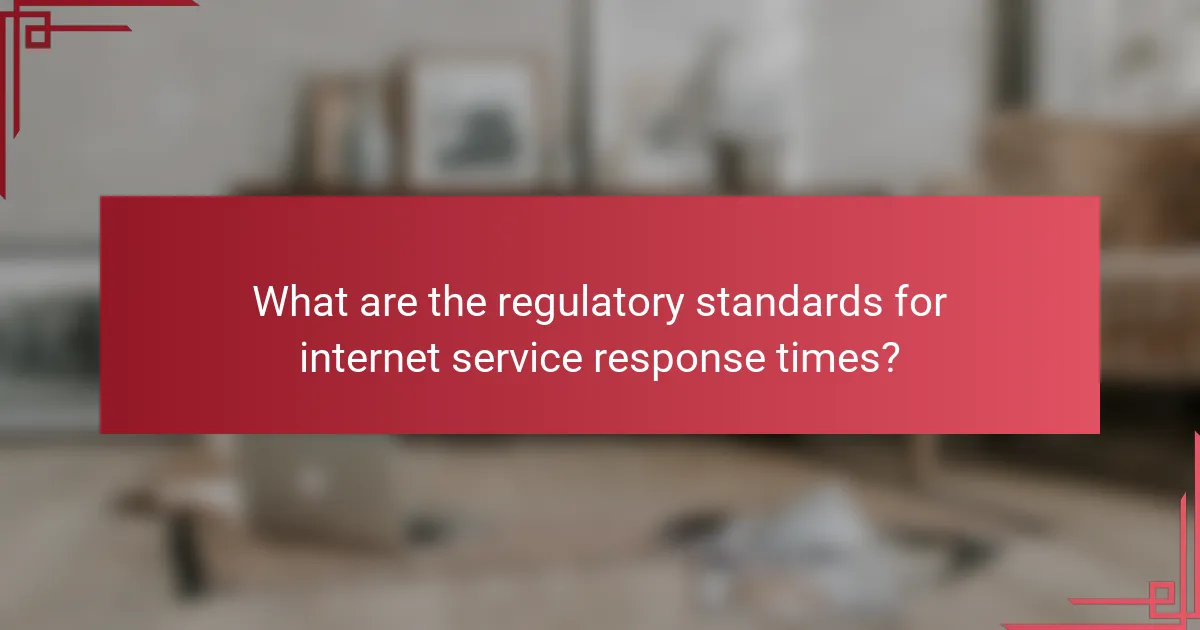
What are the regulatory standards for internet service response times?
Regulatory standards for internet service response times vary by region but generally aim to ensure that providers deliver timely support to customers experiencing issues. These standards help set expectations for both service quality and customer satisfaction.
FCC guidelines on service response
The Federal Communications Commission (FCC) has established guidelines that require internet service providers (ISPs) to address service outages and customer complaints promptly. While specific response times can vary, the FCC emphasizes the importance of maintaining reliable service and ensuring that customers receive timely updates on their issues.
For instance, ISPs are encouraged to resolve service interruptions within a few hours for critical outages, while less urgent issues may have longer resolution timelines. Providers must also keep customers informed about the status of their complaints, which can enhance overall satisfaction.
State-specific regulations
Many states have their own regulations regarding internet service response times, which can differ significantly from federal guidelines. These regulations often focus on specific service level agreements (SLAs) that ISPs must adhere to, including response and resolution times for customer issues.
For example, some states may require ISPs to respond to service-related complaints within a specific timeframe, such as 24 hours, and to resolve them within a set number of days. Customers should check their local regulations to understand their rights and the expected timelines for service response in their area.
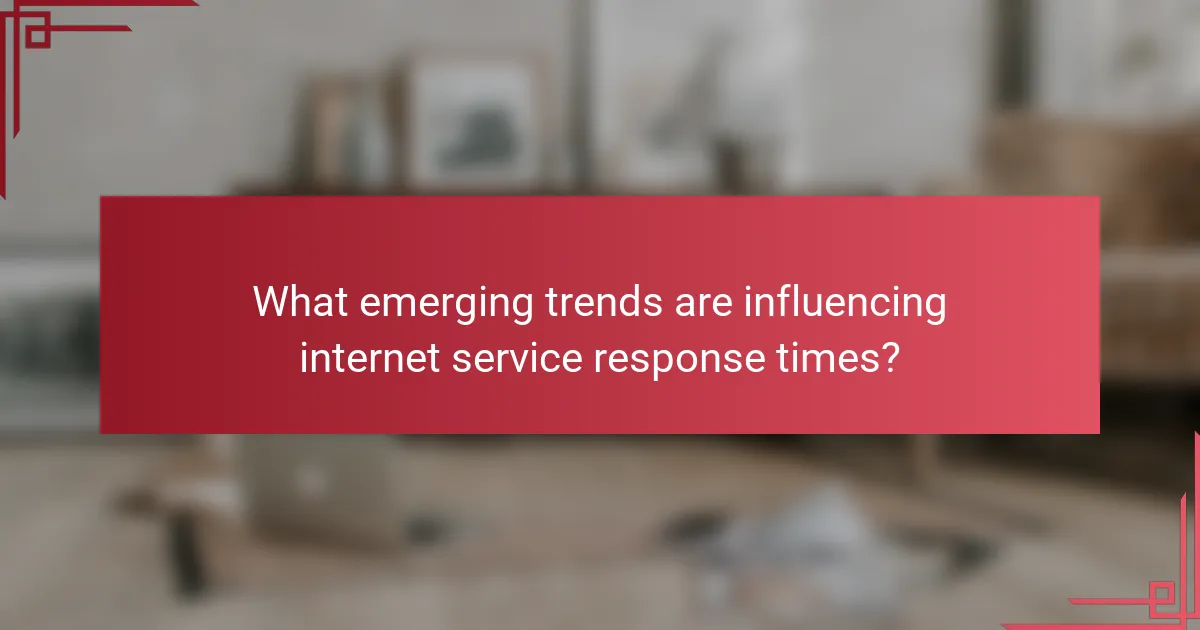
What emerging trends are influencing internet service response times?
Emerging trends such as AI-driven support and the rollout of 5G technology are significantly shaping internet service response times. These advancements not only enhance efficiency but also set new expectations for customer service in the digital landscape.
AI and automation in customer support
AI and automation are transforming customer support by enabling faster response times and more accurate issue resolution. Automated chatbots can handle routine inquiries instantly, often resolving issues in seconds rather than minutes.
Companies are increasingly integrating AI tools to analyze customer data and predict service disruptions, allowing proactive communication. This shift reduces wait times and improves overall customer satisfaction.
Impact of 5G technology on service delivery
The introduction of 5G technology is revolutionizing internet service delivery by providing significantly lower latency and higher speeds. With 5G, response times can drop to single-digit milliseconds, enhancing real-time applications like gaming and video conferencing.
As 5G networks expand, customers can expect more reliable connections and quicker resolutions to service issues. This technology also supports a larger number of devices, which is crucial in densely populated areas.
Future customer expectations in the digital age
As technology evolves, customer expectations for internet service response times are rising. Users now anticipate immediate assistance and minimal downtime, reflecting a shift towards instant gratification in service delivery.
To meet these expectations, providers must invest in advanced technologies and training for support staff. Customers are likely to favor services that offer transparent communication and quick resolutions, making it essential for companies to adapt their strategies accordingly.
